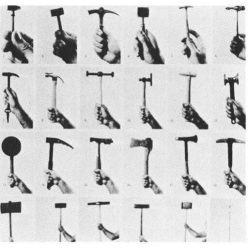I started the work on this blog by reading Kimberle Crenshaw’s 1991 article “Mapping the Margins: Intersectionality, Identity Politics, and Violence Against Women of Color”. While I have been discussing intersectionality in my teaching, I hadn’t engaged with Crenshaw’s work in depth. Particularly eye-opening in her writing, was the clarity with which she conveys the implications of different structures of domination. She powerfully shows that intersectionality is not just an abstract theoretical concept, but that it has real, tangible consequences in everyday life. As she writes: “The struggle over which differences matter and which do not is neither an abstract nor an insignificant debate among women. […] In the context of violence, it is sometimes a deadly serious matter of who will survive – and who will not.” (Crenshaw, 1991, p.1265)
While reviewing these resources, I could see Crenshaw’s thinking echoed through each video: through calls to truly address structural inequalities around race and disability in the first video; through discussions of visible/invisible identities in the second video; and in the last video by emphasising the fact that the needs of disabled people should not be an afterthought. Each of these videos also highlighted, though not explicitly, how supposedly inclusive spaces – queer spaces, Paralympics, arts organisations – are often not inclusive for people with disabilities, or people of colour, or women, further reinforcing the need for an intersectional approach to addressing inclusivity.
The resource that stuck with me the most was the second video, documenting the work of the artist Christine Sun Kim. By exploring different aspects of communication through her experience as a deaf person, Sun Kim raises wider issues about the visibility and invisibility of disabled people in society, linking that to other aspects of her identity as a woman, as a mother, as an artist. These aspects are subtly woven in her storytelling, for example, when she speaks about living in Berlin where childcare is free and where she has a degree of financial security or is able to access suitable studio space, she is highlighting the way structural, social factors enable her to work and live as an artist.
In my own teaching, I have mostly encountered what may be called non-visible disabilities (though I recognise this term is contested). The most direct way in which that disability is made ‘visible’ through the university’s systems and structures, is with ISA documents. While ISAs stipulate how we should approach our teaching and assessment, I have too often found that these are treated as almost as a ‘bonus’ and teaching is not structured to be inclusive as a baseline approach. This is evident with teaching materials which are often not inclusive, are shared late, and are often not accessible in format. The second issue in terms of ISAs that relates to intersectionality is the fact that despite very large numbers of international students in our cohorts, most students with ISAs seem to be home or EU students. This may indicate that there is a barrier in terms of accessing the support system, in particular for our Mandarin-speaking students that I think would be worth exploring in more detail in dialogue with the disability service. It’s important that we consider questions such as: What understanding do our students have of disability service and support it offers? How might we address the potential stigma attached to disability? How can language development and disability service work in dialogue to support international students? What other barriers and challenges might those students be facing (issues of class, race, gender-based discrimination)?

Hi Rujana, I found your blog on Crenshaw’s intersectionality work insightful and thought-provoking. Your reflection on how her ideas are mirrored in the videos, especially Christine Sun Kim’s, was compelling. Your critique of the university’s handling of non-visible disabilities through ISAs is spot-on. Highlighting the potential barriers for international students accessing disability support is crucial. Your call to make teaching materials inherently inclusive and consider how language support and disability support teams could better collaborate is an interesting idea.
Thanks Jacqui, really appreciate your comment. It’s interesting how all these actions might seem ‘obvious’, but it is worth reminding ourselves of them when we are busy with our day-to-day teaching or admin work… actually revising our working processes and patterns to foreground inclusivity seems like a really important, yet often quite challenging, first step.
This reflection on non-visible disabilities in teaching is particularly compelling. I feel like you have highlighted the often-overlooked issue of ISA documents being treated as add-ons rather than integral to creating an inclusive learning environment. And I think you raise a really interesting point about how accessible the universities resources are to international students with english as a second language.
Thanks Lucy for your comment. I heard from a number of colleagues now, even though just anecdotally, that the confidence our international – and in particular East Asian – students have with language has been decreasing. I have also heard from other colleagues that interventions like language development are seen as punitive, so it’s really important to factor in cultural norms and discourses in the way we approach ISAs and look forward what impact the new self-certification will have on that.